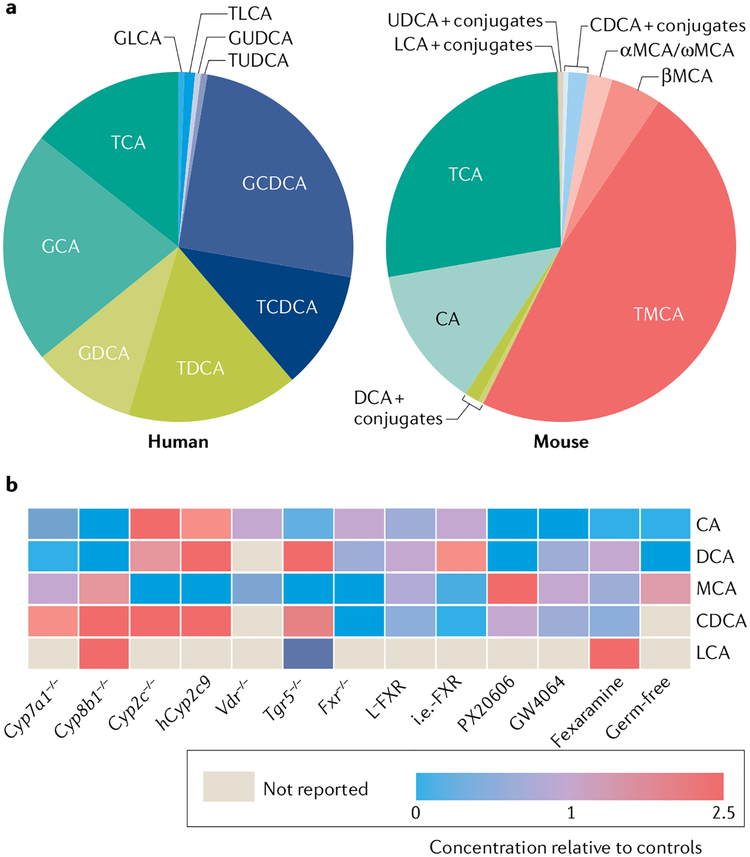Fig. 2 |. Bile acid composition.
a | Average bile acid (BA) composition in human biliary bile (left) and in enterohepatic tissues (including bile) of wild-type mice (right). Human biliary bile data are averages from REFs142–144. Mouse BA pool data are averages from 58 wild-type mice across multiple studies including own published and unpublished studies. TMCA represents the sum of taurine-conjugated α-, β- and ω-muricholic acids (MCA). b | Effects of genetic knockouts38,182,187–190 and pharmacological treatments43,45,191,192 on mouse BA composition. Data for each BA species are the sum of conjugated and unconjugated BAs, and were calculated as (the percentage in the experimental pool/the percentage in the control pool). PX20606 and GW4064 are farnesoid X receptor (FXR) agonists. Fexaramine is a gut-restricted FXR agonist. In germ-free mice, no unconjugated BAs are detected. CA, cholic acid; CDCA, chenodeoxycholic acid; DCA, deoxycholic acid; GCA, glycocholic acid; GCDCA, glycochenodeoxycholic acid; GDCA, glycodeoxycholic acid; GLCA, glycolithocholic acid; GUDCA, glycoursodeoxycholic acid; i.e.-FXR, intestine epithelium-specific FXR knockout; L-FXR, liver-specific FXR knockout; LCA, lithocholic acid; TCA, taurocholic acid; TCDCA, taurochenodeoxycholic acid; TDCA, taurodeoxycholic acid; TLCA, taurolithocholic acid; TUDCA, tauroursodeoxycholic acid; UDCA, ursodeoxycholic acid.

